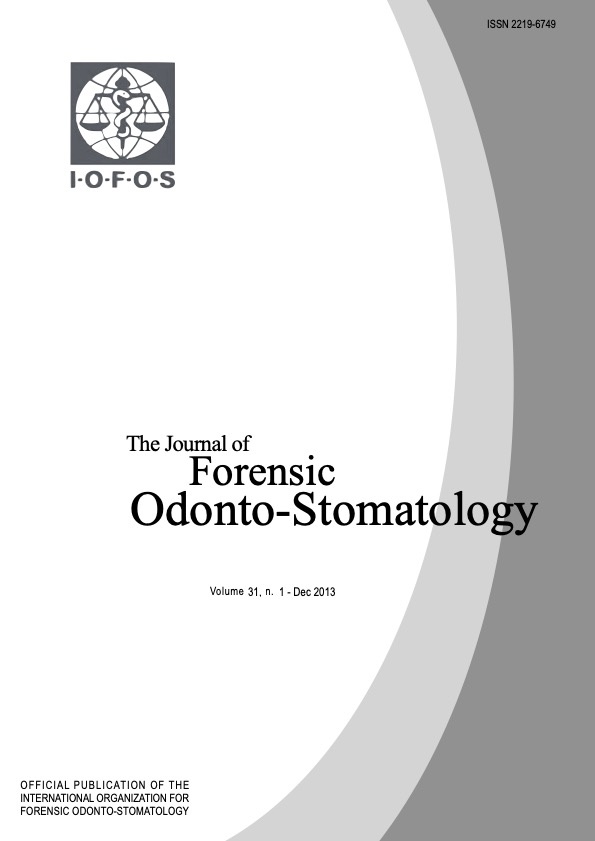A simple, safe, reliable and reproducible mechanism for producing experimental bitemarks
Keywords:
forensic dentistry, bitemark, biteforce, living subjectsAbstract
It is a widely accepted that there is scarcity of research and scientific literature regarding bitemark evidence and its validity. With improving technology it should be possible to develop an objective, reliable and valid method that can be undertaken by most forensic Odontologists without recourse to expensive or bulky equipment. One of the main factors that affect the physical appearance of bitemark is the amount of force applied during biting. However, there is little evidence relating the force applied to produce a bitemark to the level of effort of the biter. This paper describes simple apparatus that can be used to inflict experimental bites on living subjects reproducibly and with minimal risk. The aims of this study are
1) To report on the development of a mechanical apparatus that produces experimental bitemarks on living human subjects with a known force in a safe, reliable and reproducible manner.
2) To relate the weight applied during production of the experimental bitemark to maximum bite force of the biter.
Maximum bite force of one of the authors was determined as 324N. Experimental bitemarks were inflicted on living subjects with known weights. Weights of up to 10kg were well tolerated by the subjects. The relation between forces used to inflict bites to the maximum bite force of the author is reported with 10kg being approximately ⅓ the maximum biteforce. The apparatus was well tolerated and the results were reliable and reproducible. The results from this study could help in determining the severity of bitemark. This apparatus could help researchers in developing objective based bitemark analysis techniques.

